PoGal53A(endo-β-1,4-Galactanase)
PoGal53A
Ex-Gal00341
(EC.3.2.1.89) endo-β-1,4-Galactanase
CAZy Family: GH53
PROPERTIES
1. ELECTROPHORETIC PURITY
-Single band on SDS-gel electrophoresis (MW ~39 kDa)
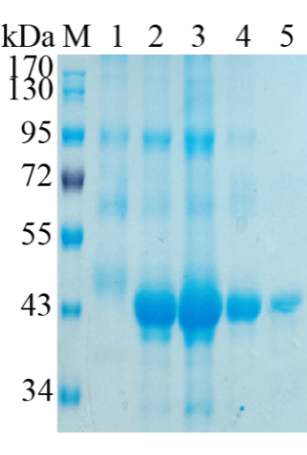
Figure 1. Electrophoresis analysis of PoGal53A. M, molecular weight marker (PageRuler Prestained Protein Ladder, Thermo Scientific); lane 1, culture lysate before Methanol induction; lane 2-4, culture lysat after Methanol induction; lane 5, PoGal53A purified from Ni sepharose fastflow column.
2. SPECIFIC ACTIVITY
0.6 U/mg protein (on Potato Galactan) at pH 4.0 and 40°C
One Unit of galactanase activity is defined as the amount of enzyme required to release 1 μmol of reducing sugar per minute from Potato Galactan (5 mg/ml) in Na-Acetate buffer (20 mM) pH 4.0.
3. RELATIVE RATES OF HYDROLYSIS OF SUBSTRATES
Table 1. Substrate specificity of recombinant PoGal53A towards different polysaccharides.

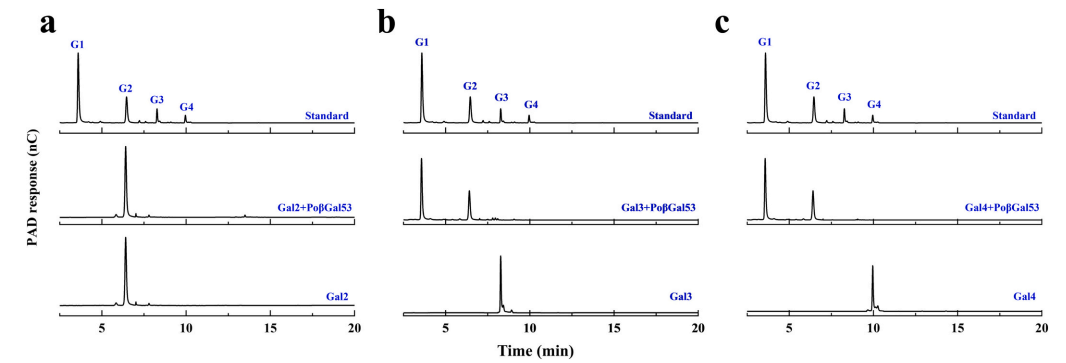
Figure 2. Cleavage pattern analysis of PoGal53A by HPAEC. Hydrolysis of 1,4-β-D-galactobiose (Gal2) (a), 1,4-β-D-galactotriose (Gal3) (b), 1,4-β-D-galactotetraose (Gal4) (c) by PoβGal53. G1 (Gal), G2 (Gal2), G3 (Gal3) and G4 (Gal4) were used as the authentic standards.
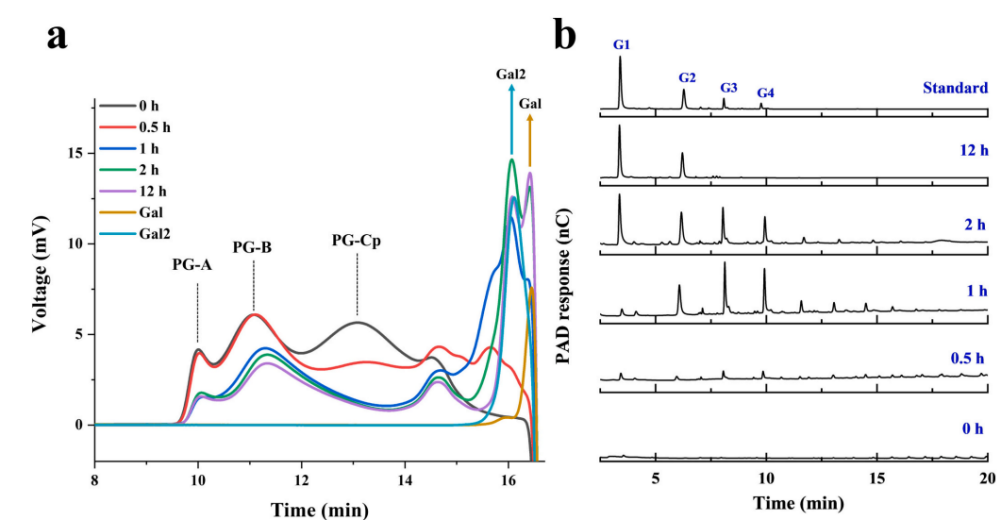
Figure 3. HPGPC and HPAEC analyses of the enzymatic hydrolysis products generated from potato galactan. (a) HPGPC chromatograms of potato galactan hydrolysate. PG-A, PG-B and PG-Cp represent the fractions in potato galactan. (b) HPAEC chromatograms of β-GOS obtained from potato galactan hydrolysate. G1 (Gal), G2 (Gal2), G3 (Gal3), G4 (Gal4) were used as the authentic standards.
4. PHYSICOCHEMICAL PROPERTIES
pH Optima: 4.0
pH Stability: 3.0-9.0
Temperature Optima: 40°C
Temperature Stability: 30°C-40°C
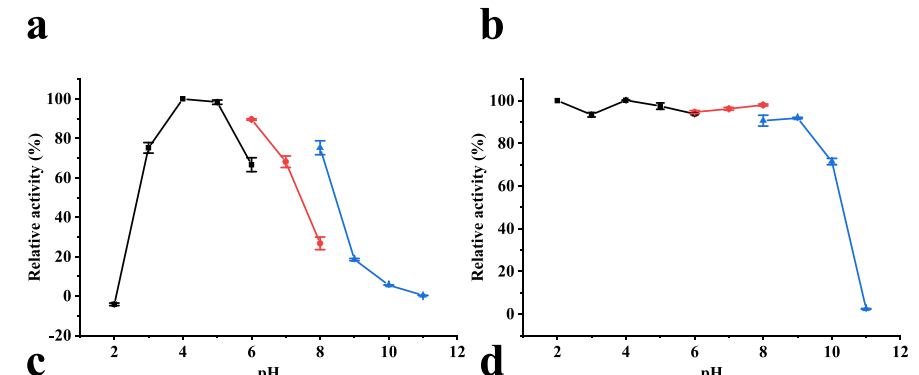
Figure 4. Effect of pH on activity (a) and stability (b) of PoGal53A using potato galactan as substrate. The optimal pH (a) was determined at different pH from 2 to 11. The maximum activity obtained was defined as 100% activity. Thermal stability was determined by incubating the enzyme for 3 h at different pH. The activity of the enzyme before incubation was defined as 100%. Results are presented as means ± standard deviations(n = 3).
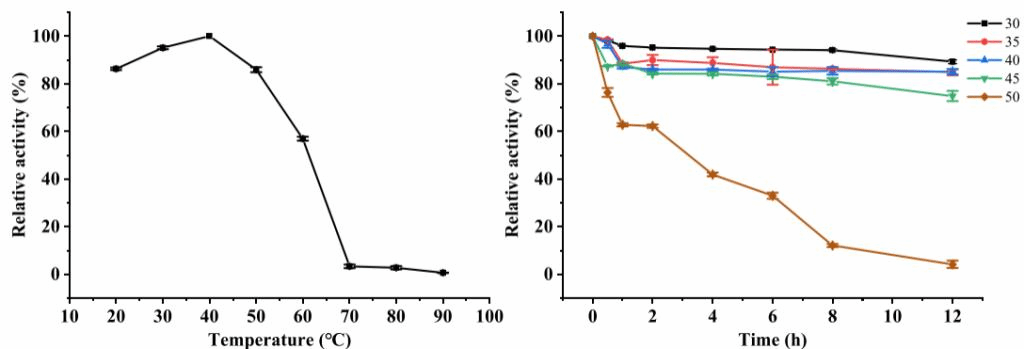
Figure 5. Effect of temperature on activity (a) and stability (b) of PoGal53A using potato galactan as substrate. The optimal temperature (a) was determined at different temperatures from 20 to 90℃. The maximum activity obtained was defined as 100% activity. Thermal stability was determined by incubating the enzyme for 3 h at different temperatures. The activity of the enzyme before incubation was defined as 100%. Results are presented as means ± standard deviations(n = 3).
5. STORAGE CONDITIONS
The enzyme should be stored at -20°C. For assay, this enzyme should be diluted in acetate buffer (20 mM) pH 4.0. Swirl to mix the enzyme immediately prior to use.
6. REFERENCES
[1] 衣昊庭.可降解RG-I果胶分子中半乳聚糖链的水解酶制备及其功能研究[D].东北师范大学,2023.


